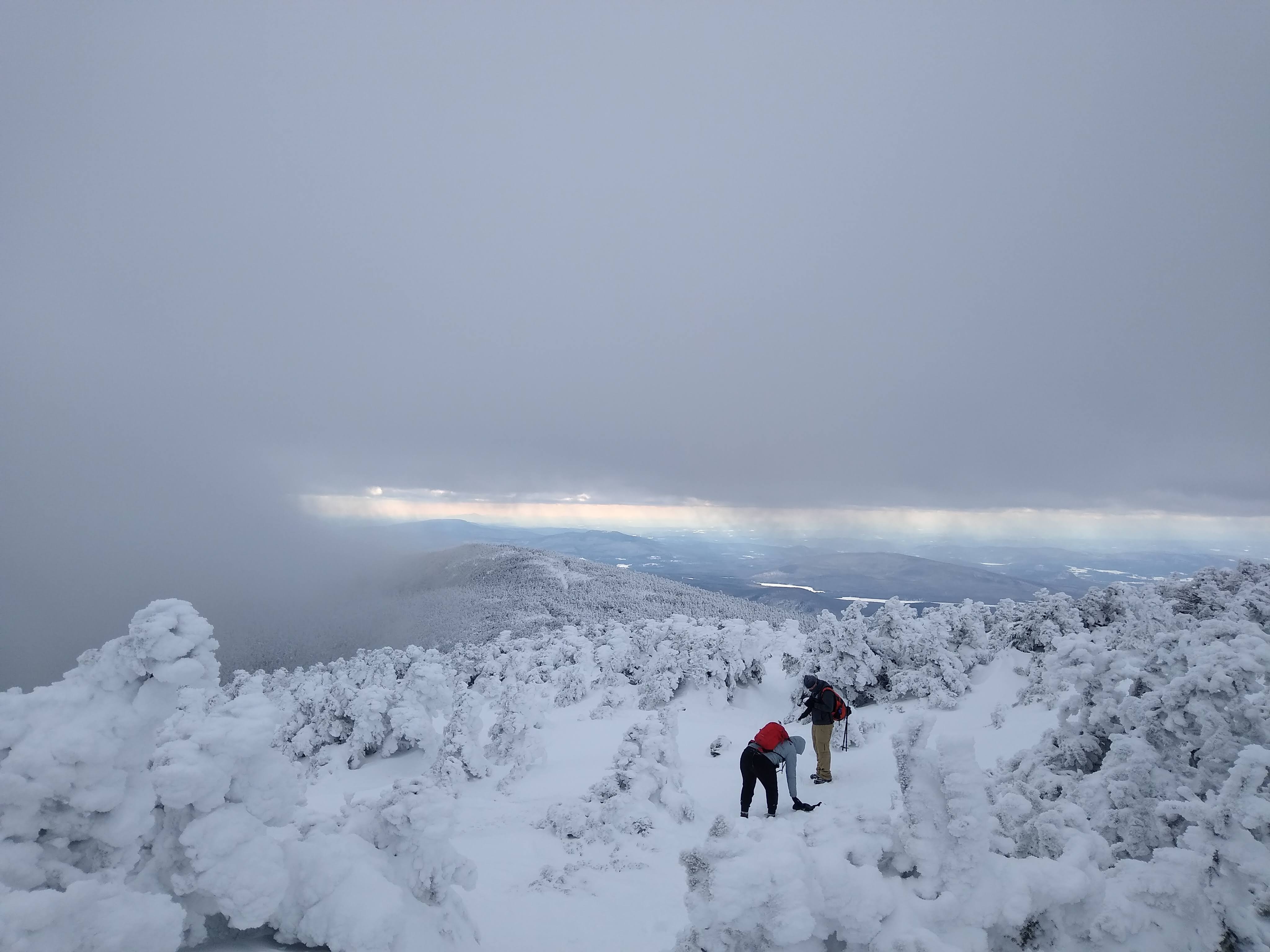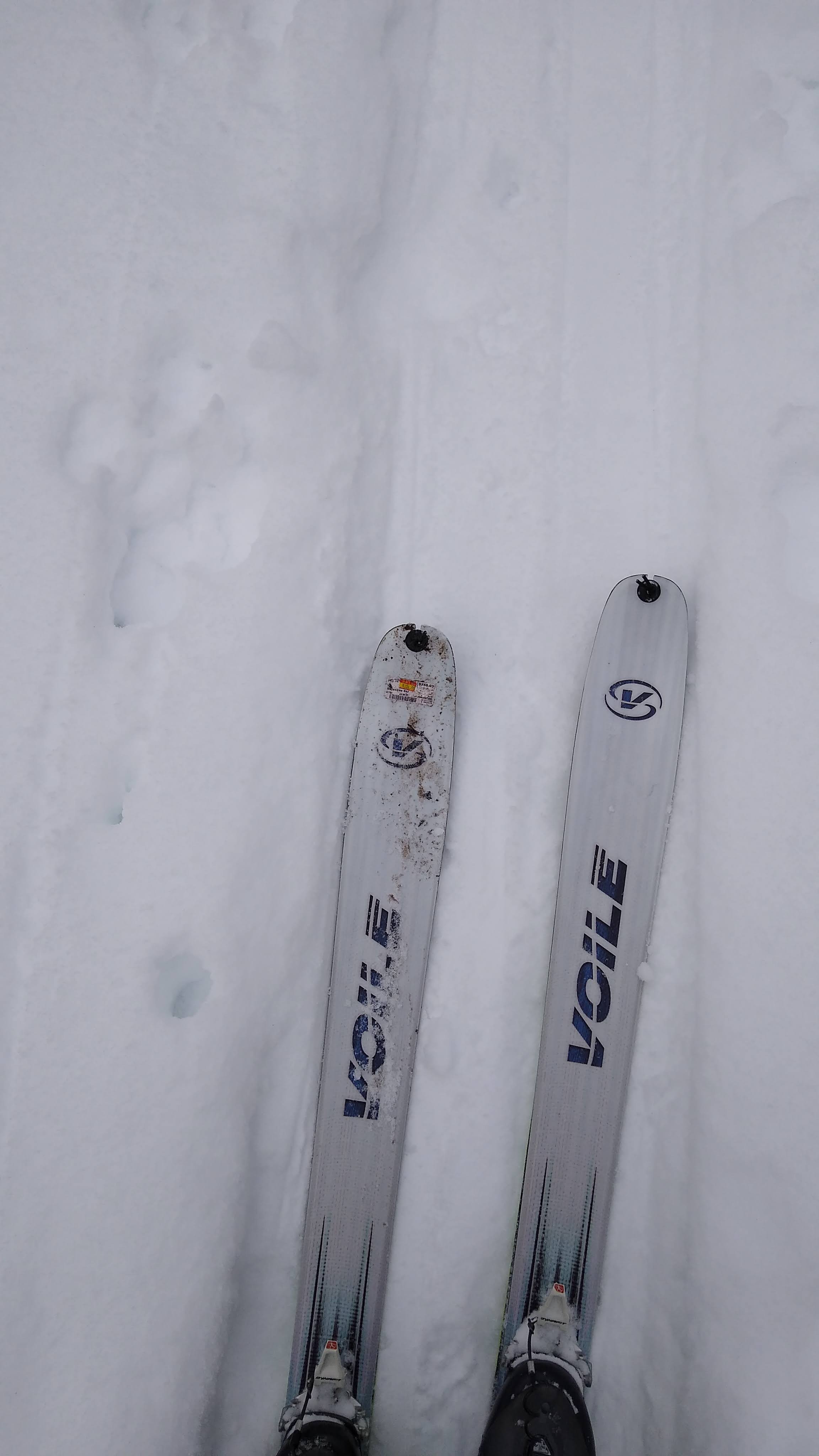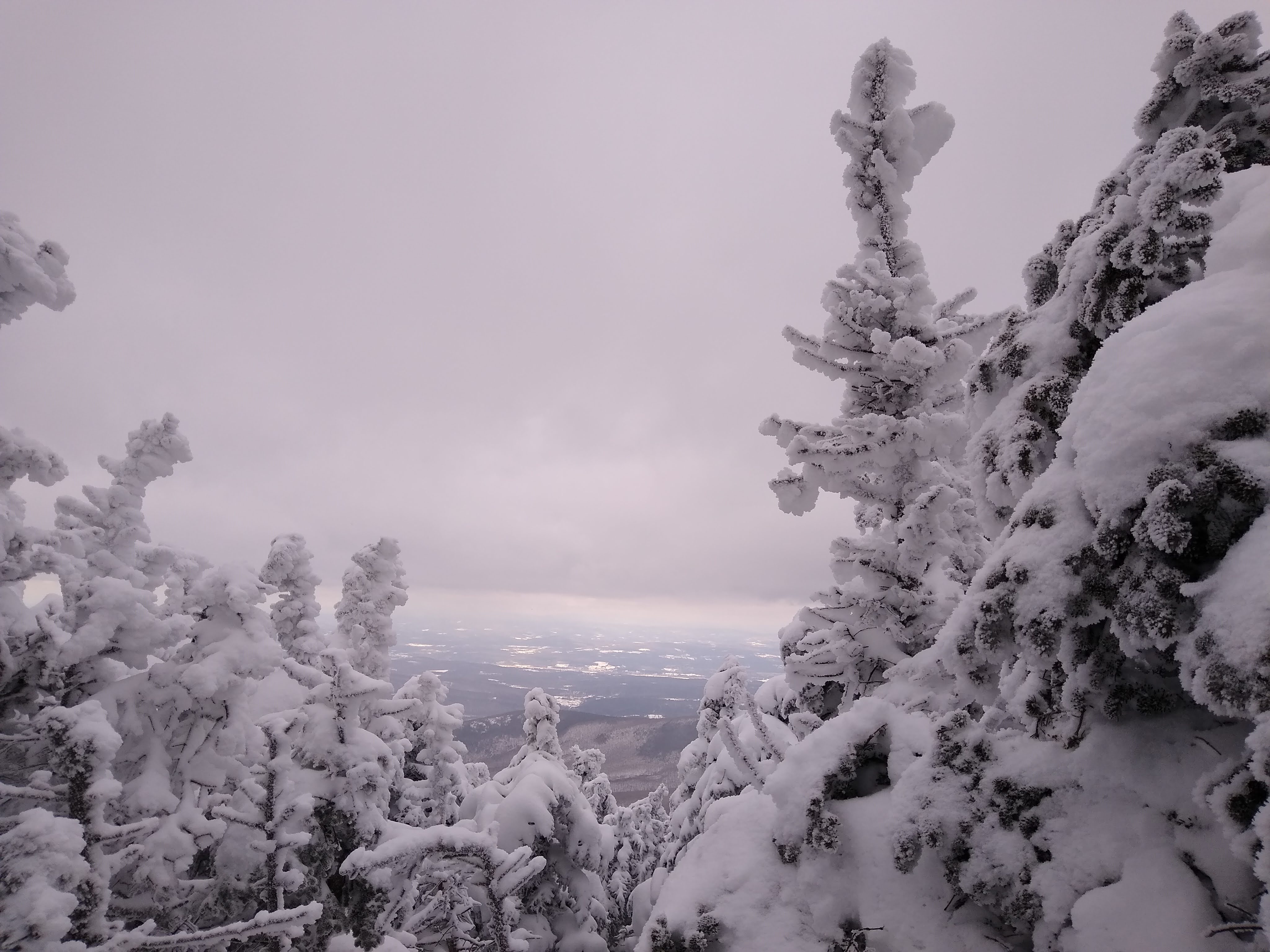During Winter Field Day 2023, I decided to do my first backcountry ski ascent of one of New Hampshire’s most formidable peaks, Mt. Moosilauke. Take a look!

The Summit
Mt. Moosilauke is a 10-point summit in the White Mountain National Forest. It needs not further description, since it’s a very popular SOTA summit. It has, at the time of this writing, over 39 activations!
Mt. Mooosilauke is one of the key high peaks in the region. It is the first major summit encountered in New Hampshire on the Applachian trail, and one of the most southern high peaks in White Mountain National Forest. The Glencliff trail passes through the summit, leading to a junction of 3 different trails up at the top.
As with most New Hampshire summits, the rocky pile at its peak is much different than the thick brush right below. The summit, for the top 50 vertical feet or so, is bare, icy, and home to extremely low temperatures with high winds. But the peak, and its presequent journey, are overall incredibly beautiful.

The summit in winter. Otherworldly.
The Excursion
Getting There
The summit can be reached through any number of trails including:
- Glencliff Trailhead - traditional AT route, windward side
- Breezy Point and Moosilauke Carriage Rd - longer, gentler ascent
- Beaver Brook Trailhead - short, steep, leeward summit side
- Gorge Brook Trailhead - On the steep side of gentle
I used the Moosilauke carriage road for a ski ascent. If you’re on snowshoes, the beaver brook may be the quickest way to get up.
Approach
Since this is New England you’ll have very little scrambling to deal with. Especially in deep snow, you won’t have to deal with the troubles of normal summer hiking (bugs, tourists, rocks, creeks, or tourists).
Like I said, I skinned up the carriage road. It was generally wide (usually 4-6ft) and pretty gentle for an entire 5 miles. The scenery is beautiful especially in the winter. This is a popular hike in all directions, even in the winter, so you should have some neighbors while you’re hiking. Since 90% of the hike is below treeline, the temperature was great too - I wore a single baselayer for most of the approach when base temperatures were in the 30s.
If you take a western or southern approach, you will most likely come across South Peak. This is a good time to take stock of your ability to climb to the top, and potentially stash gear while you summit.
Overall I kept a good pace and thoroughly enjoyed the serenity of the mountain in the winter.
 Lots and lots of skinning
Lots and lots of skinning
Ascent
As I said, once you get past South Peak the rubber (ski skins) starts to hit the road (snow). Views here become incredible:
 South Peak View
South Peak View
Stress starts to increase just a bit. There is a definite summit area where winds pick up substantially and visibility reduces exponentially. I ended up taking of my skis and throwing on crampons to walk the last 1/4 mile to the summit. It looks like a different planet, and I was worried most of the time of losing anything that wasn’t tied to me.
Thank goodness for the 25 vertical meter rule, since right below the summit was still calm and warm. I threw on my outer shell, a down jacket, and some handwarmers, and took out my HT while just taking in the scenery.
The Equipment
I brought some new equipment for a full winter setup. This was one of the first times I felt completely calm, safe, and warm the entire time!
Winter Necesssities
Layering is incredibly important here. I finally went out and bought everything I needed, and it truly has made all the difference. The material of your clothing will make all the difference here.
- Baselayer - Smartwool Merino Tops and Bottoms
- Mid Layer - Hiking pants and microgrid fleece pullover
- Mid Layer 2 - Down jacket just for summit activation when I’m not moving
- Outer layer - Arc’teryx outer shell jacket and bibs
- Extremities - Mittens with polyester liners, smartwool socks, wool beanie, and polyester neck gaiter. Also some snow-sunglasses instead of goggles.
I can’t sing the praises of the mitten liners enough. I wore them from the instant I headed out for the day and didn’t take them off until I got home. I can use my phone, mess with equipment, and paw through snow without anything getting frozen. If I get too cold, I throw the mittens on.
Ski Equipment
If you’re a ski aficianado, here’s my setup:
- Skis - Voile Objective
- Skins - Voile PoMoCa Skins
- Bindings - Used unknown Dynafit AT bindings
- Boots - Used Skimo Dynafit boots
- Poles - Black Diamond Aluminum Trail Cork poles
- Helmet - Random resort helmet for the descent
I love the Objective Skis. My boots could be a little better sized, but I can get through most of the day without pain.
Ham Equipment
I’ve changed my setup one more time. I have ended up using a random wire and have seen great success with it. However, I only used my HT.
- Elecraft KX2 with Tuner
- N2WU Mast
- CW paper and pen
- DMR DJ-MD5XT set to simplex
The Contacts
I made it right on time to my planned activation time and stayed in the safe-ish area below the summit. I didn’t quite feel like taking out my HF rig, so I used the HT and actually got my 4 required contacts. Thank you New England hams!
| Callsign | Band | Time | Location |
|---|---|---|---|
| AF1T | 2M FM | 1844 | New Hampshire |
| AA1UI | 2M FM | 1844 | New Hampshire |
| KC1QXL | 2M FM | 1845 | Vermont |
| KB1OWG | 2M FM | 1846 | New Hampshire |
Conclusion
The ski trip down was quick and dicey. There were some tight, steep areas with little turn-off, so I only skied about 100 meters at a time before taking breaks. I reached a top speed of 17 mph and skied the entire 5 miles to the bottom. I did have to reapply my skins close to the bottom, but some of the other skiers kept their downhill setup the entire way.
This was a brand new excursion for me and a great way to experience the backcountry!
-N2WU
